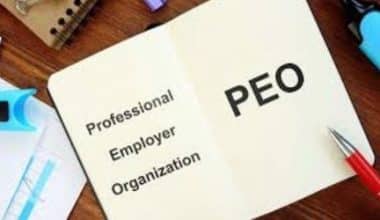No matter what field you work in or what you do for a living, you will inevitably have to sit in on a business meeting at some time. Every business is different, but it’s common for companies with an office layout to hold many meetings each day. Regardless, it’s crucial to know what types of subjects are covered in meetings at your workplace, how to run an efficient meeting, and what proper meeting etiquette entails. A meeting facilitator may be asked to take minutes or come up with icebreakers for the group they are in charge of. In this article, we will discuss what church business meeting is all about, minutes, and how to run them in a restaurant space.
What Is Business Meeting?
A business meeting is a gathering of individuals to discuss aims, plans, and objectives pertaining to their work. It is a gathering of people with the aim of reaching a decision, solving a problem, coming up with ideas, or organizing a project; it is formal and usually follows an agenda.
A meeting is a gathering of two or more individuals with the purpose of discussing and maybe resolving an issue. Groups can get together, whether it’s the Board of Directors, the Employee’s Association, or the Functional Heads. Each gathering needs to advance the cause, and it can’t just ramble.
To do this, it is essential that everyone present do their part to help the group reach its full potential. In a business setting, a meeting can help accomplish a number of goals. As an illustration of its usefulness, consider the following: resolving a dispute between departments, informing workers of crucial updates to the business, etc.
Directors and stakeholders need to get together when it makes sense for business purposes, debate pertinent issues, and then make decisions. That is to say, meetings are crucial to the decision-making process and, by extension, the smooth running of any organization.
Types of Business Meetings
One of the most fruitful avenues for improvement in this age of increased emphasis on productivity, efficiency, and profitability is a close examination of the metrics surrounding the conduct of business meetings.
It’s important to know the nature of a meeting before diving into its preparation. A weekly status meeting is very different from an emergency meeting that may call for immediate action.
#1. Status Update Meetings
Regular team meetings are something almost every business has experienced. Their original purpose was to keep everyone informed about the status of ongoing projects and to ensure that everyone was on the same page on the method by which those projects would be completed. These get-togethers are intended to fix any miscommunications that cause unnecessary repetition of tasks or problems.
Although not the most exciting or interesting, business meetings like this are essential for resolving issues, delegating responsibilities, and making important choices. Such discussions have the potential to evolve into concise catch-ups and are less likely to run over the time limit.
#2. Decision-Making Meetings
Even though managers have the final say in most cases, key business decisions are frequently discussed in committees or even larger groups. Some decisions may be made during status update meetings, but the bigger ones will require their own gatherings.
For the best results, the decision-making process may be broken down over a series of sessions. This would give everyone involved ample time to learn the facts, discuss possible solutions, and cast their votes. As a result, there may be a great deal of time spent in pointless meetings and e-mail chains.
#3. Problem-Solving Meetings
The purpose of a problem-solving meeting is similar to that of a decision-making meeting. Problem-solving meetings are essential but are not predictable because problems will be unique to each team and organization.
It’s possible that urgent situations will need such gatherings. It may be difficult to discover a solution to an issue if, for example, the root cause has not been pinpointed and multiple competing priorities must be managed. Either way, these get-togethers provide an opportunity for coworkers to discuss the issue at hand, generate ideas, and ultimately find a workable solution.
#4. Team-Building Meetings
Although every meeting is an opportunity for a team to become a little closer to one another through the exchange of banter at the beginning and the development of a deeper understanding of their counterparts, it is occasionally important to have a meeting that is specifically designed to foster teamwork.
These meetings, which may take the form of workplace events or outings for the team, the department, or the entire company, have the potential to inspire some loyalty and involvement on the part of the workforce. They provide the ideal occasion for encouraging workers to interact with one another and cultivating more personal relationships, both of which are beneficial to the development and expansion of the firm.
#5. Idea-Sharing Meetings
Instead of sending out a lengthy email or a rambling chat thread, it may be more efficient to have everyone in the group meet together and discuss the latest developments in person.
Not only may the presenter delve deeper into the subject at hand, but team members can also engage in real-time Q&A. In addition to fostering more teamwork, deeper relationships, and a more interesting meeting experience, these meetings also make idea exchange interactive by allowing colleagues to bounce ideas off of one another. Meetings of this nature might be time-consuming, but they frequently provide fruitful outcomes, such as novel product concepts, market penetration, and competitive advantages.
#6. Innovation Meetings
Meetings focused on innovation are the go-to solution for filling the need for fresh ideas that arise periodically in all types of organizations. It is impossible to artificially induce creativity, but you can try to generate as many ideas as you can and then sort through them to identify the ones that are most applicable to the situation.
Furthermore, meetings focused on innovation may appear confusing to those who take part in them, but they are vital for ensuring that your organization stays competitive rather than adhering to the same operating procedures year after year. This is because innovation meetings give the organization the opportunity to experiment with new practices.
What Are the 4 Main Objectives of a Business Meeting?
If you’re a business owner or manager, you probably spend a good chunk of your day in a meeting. These could be with upper management, employees, vendors, or customers. However, depending on who you’re meeting with and what has to be discussed, your goals for each meeting will likely vary. Issues that could have a significant impact on business operations, for better or worse, warrant a formal business meeting. Meeting success requires familiarity with the most common types of conference objectives. Here are the 4 main objectives of a business meeting.
#1. To Resolve Issues
Finding a workable solution to an issue is an example of a conference goal. Problems will arise at some point in time that can have an impact on productivity, efficiency, and morale in the workplace. You can convene a meeting of your management team to figure out what to do if, for instance, your customer service department has gotten numerous complaints from clients. Not every issue that emerges at work requires an emergency meeting, but anything that threatens productivity or employee morale must be dealt with right away.
#2. To Announce a Change
If a manager needs to discuss an imminent change to a guideline, purpose, aim, team makeup, or anything else along those lines, they should hold a meeting. This is done so that the manager may discuss the rationale for the changes, the benefits of the changes, and the history of the changes during the meeting.
The management will respond in a way that alleviates the concerns and queries raised by the team. This will aid in the process of decreasing the natural resistance to change that comes along with such alterations.
#3. To Think of Ideas
An old proverb that states “two heads are better than one” is often the major focus of an objective during a business gathering. To put it another way, you might decide to hold a meeting in order to develop concepts for a brand-new product or service or to devise strategies for a brand-new marketing campaign. Because the goal of a brainstorming meeting is to produce as many ideas as possible in order to identify which ones are practical, these sessions are often less planned and formal than other types of business conferences.
Keeping this in mind, you should encourage your team to express their ideas openly so that they don’t feel self-conscious or belittled if the idea they suggest isn’t quite on point. This will prevent them from feeling belittled or embarrassed if the concept they recommend isn’t exactly on point.
#4. In Order to Establish Relationships
In addition to this, meetings are held to cultivate meaningful ties both within and outside of the organizations. When participating in these meetings, it is important to keep the other party in mind. Request that others share their thoughts on a topic before you do.
Pay attention to their points of view and encourage them to consider issues from a different or more in-depth angle. When it’s needed, provide some positive feedback. The praise ought to come from the heart and be precise.
What Is Needed in a Business Meeting?
Employees in offices all around the world devote a sizeable portion of their time to attending and contributing to a business meeting. Meetings that are productive and worthwhile for participants share a few commonalities that set them apart from those that are a waste of time and resources. If you are in charge of organizing or leading a meeting, use a meeting checklist to ensure that you maximize the time available, decreasing or eliminating the need for follow-up meetings to cover the same ground.
#1. Agenda
A meeting of significant individuals for the goal of discussing issues of mutual interest is what a meeting is intended to accomplish. In the event that a meeting is required, an agenda should be crafted that details the subjects that will be up for debate. The agenda should also include the amount of time that will be devoted to each subject as well as the names of any significant speakers. Set aside some time at the end of the meeting to go over any unfinished business and to talk about the steps that need to be taken next. Also, it is important that the agenda be passed out both before and during the meeting.
#2. Facilities
Make reservations for a meeting space that is large enough to accommodate all of the attendees in a manner that is both comfortable and conducive to having a conversation without being interrupted by outside noise or foot traffic. If you will be doing web conferences or otherwise require access to the internet, choose a room that is not too far from the bathrooms and check to see that it has power outlets, telephone connections, and an Internet connection. It is important to make sure that the lighting in the room can be adjusted so that it does not disrupt a presentation. Make sure that there are markers available in the event that the room features a whiteboard or flip chart.
#3. Technology
Make sure you have a projector ready for any presentations that involve video, PowerPoint, or other forms of multimedia. Also, make sure there is a speaker phone available for any conference calls. Inquire in advance with the people who will be presented as to whether or not they intend to bring their own computer or whether or not they will require one in order to submit their presentation. Make prior preparations to acquaint yourself with the technology, and if the meeting will include a Web conference, make arrangements with a provider to enable the meeting, and attend the meeting prepared. Send the participants instructions on how to phone into the meeting so that they can participate.
#4. Attendees and Speakers at the Meeting
Make certain that those individuals who need to be present at the meeting are able to be there. It is necessary to postpone the meeting in the event that one or more people who possess crucial information are unavailable. Inviting presenters to elaborate on a subject or providing information that can assist the group in reaching a conclusion should be encouraged. Get in touch with them in advance to discuss their requirements for the meeting in terms of the equipment or materials. Make sure you have the participant’s telephone numbers on hand in case any of them need to be phoned into the meeting.
How to Conduct a Business Meeting
If you’re in charge of organizing a business meeting, here are some things you can do to get ready:
#1. Focus on Your Goals
The first order of business is to establish why you’re getting together.
Think carefully about why you want to hold this meeting and how it will benefit you. Doing so will help you gain perspective on the situation and function better during the sessions.
Which begs the question: why? Be specific about what you hope to accomplish when communicating with your team, whether that’s sharing information, talking about new ideas or products, or solving a specific problem.
#2. Prepare a Meeting Agenda
Did you know that if you put together a thorough agenda, you can cut your meeting time in half?
After settling on why you’re doing something, you can make plans to get the job done. Make a list of the points you want to cover and how much time you want to spend on each one. If you want your conference guests to feel prepared, send them the schedule in advance. Doing so will not only assist people get ready for the event but also save them time.
#3. Establish an Appropriate Mood and Tone
Setting the correct tone for a meeting is essential for every manager or business leader. A Business meeting can be structured any way you like as a business owner. The tone may be formal or casual. Foster an environment of reciprocal appreciation. Takes into account and acts on the feedback of those being consulted.
If you feel the need, you should try a different vibe. Meetings are typically formal and boring. To lighten the mood, you can hold an outdoor meeting or one with a specific theme.
#4. Keep to a Scheduled Meeting Time and Duration
The majority of staff members do not look forward to business meetings. It gets worse if you don’t begin and complete your session on time. Make an intentional effort to begin and complete the meeting promptly.
If even one person is late to the meeting, cancel it. This is a great method to encourage timeliness and honesty on the job.
#5. Commence the Meeting
If the people in the meeting are not your direct superiors or peers, you should start things off by officially introducing yourself. If no one is previously acquainted, have them all go around and say their names. Appointing a notetaker to jot down meeting minutes for later review and distribution can be useful. Talk about the format of the business meeting and the key issues you want to cover before you go into your presentation.
#6. End Your Presentation
Finish the presentation while keeping time constraints in mind. Make sure your audience is interested in what you have to say by speaking effectively and making use of nonverbal indicators like gestures and facial expressions. Participants can share their thoughts as you give the material, or you can save time for a more in-depth discussion towards the end of the meeting, depending on the nature of the gathering. Allow time for questions and comments on the meeting’s topic once you’ve concluded your presentation.
#7. Conclude With a Request for Action
Conclude the meeting by summarizing the decisions and actions that were made throughout the discussion. Make your call to action explicit so that everyone involved knows what you want them to do. You may, for instance, request that people take notes during the meeting or implement some of the strategies presented in order to boost sales. Thank everyone who attended the meeting for interrupting their busy schedules to be there. This recognition might make them feel valued and respected.
#8. Maintain Contact, Act, and Evaluate
The team should go over the agreed-upon activities and agreements and divide up the work accordingly. Set strict due dates for the assigned work. The lack of a planned follow-up is one of the most disheartening outcomes of business meetings. The most promising concepts discussed in meetings rarely see the light of day. Thus, it is crucial to have a good follow-up following the meeting for it to be productive.
Assess the meeting’s success and accept comments from attendees. Assess how well the session is serving its intended objective on a regular basis. Let’s pretend it doesn’t have the frank conversations necessary to swiftly act.
Minutes of Business Meeting
No matter how much you dread them or how much you enjoy a good round of brainstorming, meetings are an inevitable part of the workday at your job, and the only practical way to avoid them is to retire. It’s possible to have something as casual as a team business meeting or something as serious as a board meeting, but the one thing they all have in common is the requirement to take minutes.
What exactly are the meeting’s minutes? They intend to take notes on the conversations that take place and the decisions that are made throughout the meeting.
What Are Business Meeting Minutes?
The minutes of a business meeting are a written record of the meeting’s key decisions and actions. They are not a full transcript of the meeting and hence unnecessary detail should be avoided. Instead, they need to focus on the most important details. Notes taken during a casual meeting serve as a record of what was said. When a group gathers formally, like at a business meeting, minutes are taken and kept as evidence.
Why Should You Keep Business Meeting Minutes?
There are a number of benefits to taking comprehensive business meeting minutes. You should take notes because of the following:
- Think Back on Crucial Details. If you ever need to look up information like facts, decisions, votes, conflicts, and attendees, you can. If a team member was missing and wants to know what took place, or if there’s a dispute about what transpired, this can be helpful.
- Protect you in the court of law. Official records of an organization’s and its board’s acts include business meeting minutes, which are respected by auditors, courts, and the Internal Revenue Service. You can use the business meeting minutes as proof of what was discussed and decided thanks to this written record.
- Evaluate development. The minutes of a business meeting can serve as a historical record of the completion of tasks, the success of choices, and the efficiency of team members follow-through.
- Trace responsibility. Keeping track of who voted for what and who made what decisions can be done with the help of meeting minutes. This might serve as a reminder to those individuals that they are being held accountable for their actions.
- Preparation is the key. You can benefit from reviewing past meeting minutes while thinking about the future. In order to manage the planning, the decisions and data gathered at the meeting may be required.
- Establish a baseline. Previous business meeting minutes might serve as a handy reference for picking up where the team left off. You can use it as a jumping-off point for the following meeting, saving time that would otherwise be spent reacquainting yourself with the material before moving on to the new material.
What Are 5 Basics of Business Etiquette?
Working for a firm whose culture is different from your own can make it especially difficult to feel comfortable in your professional interactions because even the most fundamental aspects of business etiquette can vary from one culture to the next. While you’re getting to know the ins and outs of your company’s group dynamics and team norms, it’s helpful to keep in mind a few constants that apply everywhere.
You can make a good first impression and show respect for your coworkers by practicing these five essential business courtesies.
#1. Be Punctual
Being punctual demonstrates that you value the time of your coworkers, whether at an interview or a regular standup meeting. If being on time isn’t something you’ve always given thought to, it’s time to brush up on some time management skills so you can stay on top of your obligations.
Some cultures, for example, function by always being just a few minutes late. If you’re not sure what time to arrive, it’s best to be on time and figure out the details later.
#2. Pay Respect to Your Colleagues
It is appropriate business etiquette to show appreciation to others in both informal and formal settings. At a business dinner or meeting, it’s polite to greet each person as they enter the room, whether by shaking hands or another cultural norm.
If you work remotely and have daily Zoom meetings, the same policy applies to you. While it’s not necessary to go on camera at every business meeting, making your voice heard and recognizing the contributions of others can go a long way toward making others feel valued.
#3. Dress Decently
Dressing professionally or casually for a home office is a matter of personal preference. Because so much office-based employment includes direct interaction with clients and other stakeholders, several businesses require their employees to dress formally at least some of the time. It’s possible that in some hybrid workplaces, employees are encouraged to dress more casually for the sake of employee comfort and productivity.
Also, consult your boss or supervisor if you are unsure of what constitutes proper business wear. It’s normal to feel uneasy before starting a new job, but it’s a good idea to reach out to your coworkers via email in advance of your first day to get a sense of the company culture. An alternate strategy is to recall the attire of the other candidates at your interview and try to mimic it.
#4. Honour Common Areas
Working remotely still involves some in-person and online collaboration with coworkers. You and your coworkers may have access to a shared kitchen, bathroom, printer/copier room, and lounge area at the office. Folders in Google Drive and software for managing projects are two examples of possible shared digital places.
The way you name things, keep things tidy, and handle other people in shared places will all speak volumes about you as a professional. Whether it’s picking up your trash or sticking to the company’s policies online, good business manners demand that you respect the space of others.
#5. Enhance Your Sensitivity
To have emotional intelligence means to be aware of, in control of, and in tune with one’s own and other people’s feelings and motivations. Possessing high levels of emotional intelligence can aid in building rapport with coworkers and persevering through difficult times. Even while emotional intelligence isn’t a hard and fast rule of business etiquette, it will serve you well in any contentious situation.
Let’s say you’re already running behind and your employer throws a major, time-sensitive project at you. Emotional intelligence allows you to have productive conversations with your supervisor about how to prioritize tasks. Since you’re already running behind, talk to your boss about your concerns about becoming overworked, and figure out with what you can do to catch up.
Business Meeting Restaurant
When it comes to scheduling a business meeting, choosing the appropriate location is essential for establishing the mood and developing an atmosphere that is conducive to productivity. A restaurant that has been carefully selected can serve as the ideal setting for a fruitful business meeting, the completion of business transactions, networking events, and activities that form teams. Also, read RESTAURANT MARKETING: What You Should Know and Strategies.
Types of Business Meetings at a Restaurant
The format and purpose of a business meeting can take several shapes. Finding the right restaurant for a business meeting requires first knowing what kind of meeting it is. Let’s look at some typical examples:
#1. Deal-Closing Business Meetings
Finding an impressive, quiet restaurant is ideal for closing a deal. The worst decision you can make is to go to a noisy restaurant with tight seating.
When negotiating conditions with a potential client, it’s important to do so in an informal setting where both parties feel safe sharing their true feelings and intentions. It’s difficult to concentrate and pay attention to a potential client when background noise is present. Your potential customer may be less forthcoming with you if your tables are too close together, since they may feel that others are listening in.
Also, you need a place where you can have a leisurely meal, receive excellent service, and close the transaction without feeling rushed. If you can afford a restaurant with three courses and a sommelier, go with that.
The first lesson is meant to set the stage for future interactions, while the second is meant to seal the deal and solicit business. You should save the nitty-gritty details until the final course. Get to the bottom of why business isn’t booming in the last chapter.
#2. Networking
It’s a terrific way to make connections and get some referral business while you eat lunch. Select your location with care. Due to the fact that you can’t be sure of your coworker’s financial stability, it’s best to pick a place that is conveniently located for everyone involved in the networking event. In case they can’t afford a more expensive supper, you should provide them with a range of eateries from which to choose.
Given how recently you two have met, it’s possible that you are unaware of any dietary limitations that your new coworker may have. Putting the decision in their hands puts the power where it belongs.
In addition, don’t forget to ask your coworker about their ideal networking partner and always follow up.
#3. One-on-one
A meal with a subordinate might be a great opportunity to bond or a tedious time to provide feedback and speak about nothing. To maximize the chance of getting to know your employee, let him or her pick the restaurant, provided it is affordable and accessible.
If the subordinate chooses an implausible option, offer several more reasonable alternatives and explain your reasoning. During your one-on-one, you should always be aiming for something.
#4. Team-Building Business Meetings
Managers should take their teams out for a meal or happy hour at least once a month to foster a good team dynamic. The team may relax and get to know their manager better, and everyone appreciates free refreshments. Due to financial limits, this may not be an easy assignment, but it must be completed.
The most productive workplaces are those that promote team building through social events, such as a happy hour at a nearby bar with board games, cheap drinks, and a lively atmosphere where employees can relax and unwind.
You may check out Yelp or do some reading online to discover something fresh. Managers should step out of their comfort zones and try something new to increase staff engagement; this might be anything from karaoke to fancy bowling to a themed bar.
How to Pick a Business Meeting Restaurant
There are a number of factors to take into account when deciding on a suitable restaurant for a business meeting. The following should be considered to guarantee a pleasant and professional dining experience:
#1. The Restaurant’s Setting
The restaurant’s location is a major factor in how easy it will be to hold your business meeting there. To keep things running smoothly and efficiently, it’s important to pick a restaurant that is convenient for everyone. To ensure that your business meeting attendees are able to show up on time and devote their full attention to the topics at hand, think about the following issues as you make your restaurant selection.
- Universal Physical and Auditory Access. Think about how easily everyone who will be attending the meeting can get to the restaurant. Pick a spot that is accessible via multiple modes of public transit and, if necessary, has enough parking. Also, make sure the establishment is accessible for people using wheelchairs. Easy access improves efficiency and makes life easier for everyone.
- Closeness to the Office or Meeting Location. It can be more convenient for everyone involved if business lunches are held in a restaurant that is close to the office or meeting location. This ensures that everyone can get to the restaurant on time, with as little waiting as possible. The close proximity also makes it easy to go straight from the meeting to the meal, which is great for efficiency.
#2. Environment and Ambiance
The mood and productivity of your business meeting can be greatly affected by the restaurant’s environment and setting. Whether you need a stuffy boardroom for signing contracts or a casual backyard barbecue for bonding as a team, picking the right atmosphere is essential. Here, we’ll discuss why it’s crucial to take the restaurant’s vibe and ambiance into account when making your reservation. It is possible to create the perfect atmosphere for your meeting by matching the restaurant’s atmosphere to your goals.
- Ambient Noise. The effectiveness of a business meeting held at a restaurant might be significantly diminished by distracting background noise. Pick a cafe where conversation won’t be drowned out by the background music. Choose a restaurant with a private dining room, soundproof booths, or a separate quiet place if you need to have a serious conversation. Meetings are more productive and enjoyable when held in places with an appropriate degree of background noise, which promotes participation and conversation.
- Decorations and Lighting. You can set the tone for a productive business meeting thanks to the restaurant’s lighting and design. Choose a dining establishment where the lighting is just right, neither too bright nor too dim. Think about the aesthetic you want to portray during the conference and make sure the room’s design reflects it.
#3. Capacity and Layout of the Seating
Planning a business meeting at a restaurant requires careful attention to the establishment’s capacity and layout. It’s crucial to make sure there’s enough space for everyone at the restaurant and that it’s quiet enough for people to talk. The level of comfort and the group’s ability to communicate can both be improved by choosing a restaurant with acceptable seating arrangements, such as private dining rooms or flexible seating layouts. Following is a more in-depth analysis of these elements:
- Separate or Individual Dining Areas. If discretion is of the utmost importance, look for restaurants with private dining rooms or other discrete spaces for business meetings. You can have private conversations in these settings with little interruptions. When discussing delicate topics or holding private meetings, private dining rooms are a great option.
- Choices for Big and Small Gatherings. Verify that your meeting venue has space for your entire group. Pick a restaurant that has banquet halls or huge communal tables if you’re dining with a big group. Intimate and homey venues are best for smaller gatherings. In addition, the comfort and attention of all attendees depend on the ability to rearrange chairs as needed.
#4. Culinary Selections
The success of a business meeting or dinner depends on the variety of food and drink options given by the restaurant. To best meet the demands of your visitors, it is important to think about their individual food preferences and constraints. You can make sure that everyone at the conference is comfortable and well-catered by picking a restaurant that has a wide range of menu options and can cater to special dietary needs.
- Dislikes and Restrictions in Food Choices. When deciding on a restaurant for business meetings, make sure they have options for people with special dietary needs, such as those who are vegetarian or vegan, gluten-free, or allergic. All guests will be able to relax and enjoy the meal without any hassle because of this thoughtfulness.
- Various Food Options. All attendees’ dietary needs can be met by offering a wide range of meal options. Diners will have a better time in general since they will be able to select dishes that are more appealing to their tastes. Meeting attendees often have wildly different tastes, so it’s important to choose a restaurant that can cater to them all.
#5. Cost Variation
When deciding on a restaurant for a business meeting, it is essential to keep costs in mind. In order to get your money’s worth, you need to strike a balance between price and quality. You may plan a productive business meeting without breaking the bank by balancing the following factors: cost, desired quality, and overall experience.
- Financial Factors. Think about costs before making a final decision on a restaurant for business dinners. Pick a restaurant that fits within the set spending limit for the gathering. Don’t let the low price fool you into thinking that the restaurant skimped on the food or service.
- Protecting Financial Stability. Make sure the restaurant you choose for business meetings is reasonably priced while still providing good food and service. Think about the value you got for your money in terms of the food, service, and atmosphere. You can learn a lot about the restaurant’s reputation and whether or not it will be suitable for a business meeting if you read reviews or ask for recommendations.
Church Business Meeting
Churches are unique among groups. However, they still have obligations that are identical to those of any corporation or charity. They, like the importance of competent church leadership, are emphasized throughout the Bible. Not everyone looks forward to attending church meetings, but it’s important to get together regularly to discuss things like the building and the budget. It’s for the sake of making sure the church runs well and can actually serve people.
Why Do Churches Need Business Meetings?
These days, the practical side of things is where a church business meeting really shines. This is because keeping a church in good working order requires constant attention. The budget, fundraising, events, land, new facilities, maintenance, outreach ministries, and more can all be topics of discussion.
Church officials must assemble to formulate a strategy, form a team, and check in often to ensure the project runs well. That always necessitates a formal business gathering.
When it comes to the specifics of a church business meeting, the Bible is silent. However, it does detail the responsibilities of church leaders in greater detail. Pastors and deacons fill two essential roles in the local church. Also, read 10 Best Church Management Software 2023: Free & Paid Options.
The early church’s gatherings were focused on developing doctrinal law and providing aid to those in need in accordance with Jesus’ teachings and the Bible.
The second office allows church officials to find solutions to issues. When the disciples and pastors are responsible for prayer and service, the destitute go hungry, for instance.
Helpful Tips for an Effective Church Business Meeting
There are steps you may do to maximize the productivity of your next church business meeting.
#1. Church Meetings Should Be Kept to a Minimum
It doesn’t matter that churches hold monthly business meetings. Instead, I recommend holding meetings once every three months. Leadership can be temporarily decentralized into subcommittees at this time.
Giving these groups the authority to make choices on their own, without requiring too much external permission, will make it much simpler for them to deal with any issues that arise. In this way, you can update your congregation on the latest happenings and celebrate your accomplishments with them during the quarterly or annual church business meetings.
#2. Please follow “Robert’s Rules of Order”
The parliamentary procedure manual Robert’s Rules of Order has gained widespread acceptance. Group decision-making, including the presentation, discussion, and voting on a motion, is governed by these guidelines.
Robert’s Rules of Order should be on hand at all times during meetings. In case questions or disagreements arise, you’ll have the option of consulting the original text.
#3. Gather up Member Inquiries in Advance
Your company gatherings ought to be educational. Giving your members a forum for questions and comments is a great approach to make sure they’re getting all the info they need.
The best way to get this information is going to be heavily dependent on the size of your congregation. It may be easier to make personal phone calls and in-person visits at a smaller church. Sending out emails, publishing on your website or social media, and making an announcement during services are all great ways to reach a bigger membership.
The point is to show your membership that you value their feedback and honesty.
When you have a list of questions, you may prioritize them and create a plan of action to address them.
#4. Use Outside Resources
There will be moments when it is necessary for your church to speak out on sensitive topics. These problems could, at worst, lead to a schism within your membership.
In such a situation, you should look for outside assistance. It’s possible that your preconceptions as a church leader and member are clouding your judgment. Therefore, a neutral moderator should be sought.
It will be helpful to have an objective third party offer suggestions you hadn’t considered. If you want your meeting to go smoothly, it’s a good idea to choose a moderator who is knowledgeable about Robert’s Rules of Order.
#5. Appoint Someone to Take Notes at Meetings
At the end of the meeting, someone should be designated to take minutes. This person obviously can’t be the one in charge of the gathering. A secretary’s duties typically include taking notes during meetings.
Notes from meetings should include:
- Time and place of the meeting
- Attendees
- Votes and alterations
- Acceptance of ideas and passing of motions
- Fresh Deals
- Date and time of the next meeting
- Results of the Election
- Action items
The secretary of your church needs to print out the minutes from each business meeting and give them to every member who was present. At the next meeting, members will vote on whether or not to adopt these minutes.
Once approved, they should be filed away with other important paperwork. To further demonstrate openness, you should publish online summaries of board meetings.
Bottom Line
Business meetings are crucial for every successful organization. It’s useful for maintaining tabs on what the company has done to get where it wants to go. As an added bonus, it encourages teamwork by facilitating communication, idea-sharing, problem-solving, and decision-making.
Regardless of the size of your company, regular business meetings are essential for keeping track of progress and achieving goals. Since neither management nor its staff can completely avoid a business meeting, the best course of action is to find a happy medium that yields productive gatherings for all involved. Therefore, it is essential for a corporate leader to be able to connect in all business meetings in order to effectively manage people.
Frequently Asked Questions
What Are the 5 Types of Formal Meetings?
Some common types of formal meetings are:
- Board meetings.
- Team or departmental meetings.
- Quarterly reviews.
- Committee meetings.
- Governmental debates.
What Not to Do in a Business Meeting?
Important Things You Should Never Do in a Business Meeting
- The Meeting Must Not Be Allowed To Get Out Of Hand.
- Be humble.
- Pay Close Attention, and Don’t Just Argue
- Don’t Come Across As Too Forceful
- We’re Past That Stage at This Point
- Avoiding Question Preparation
- Superfluous Inquiries.
Similar Articles
- How To Open A Restaurant In 2023: Free Tips & How to Open It with No Money
- How Much Do Restaurant Owners Make: Restaurant Owner Salary in 2023
- 3 Accounting Benefits of Investing in Church Management Software
- EMPLOYEE ENGAGEMENT ACTIVITIES: Best engagement activities for work in 2023
- Working Style: What Is It & How Do You Find Yours?






